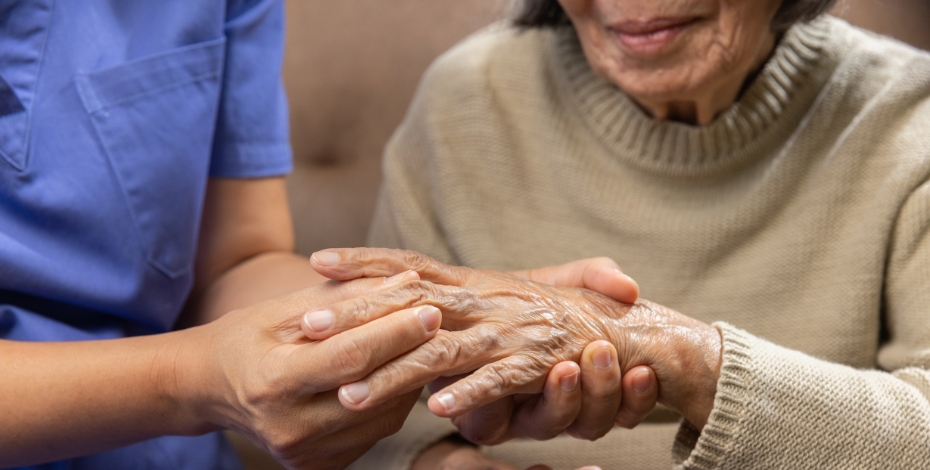
New data shows nearly 50 per cent of Australians in their prime earning years living with chronic pain are unable to work1, with almost 30 per cent of those returning to work only capable of working at a reduced capacity.1
The newly released 2024 National Pain Survey: The Social and Economic Cost of Chronic Pain by Chronic Pain Australia for National Pain Week additionally showed that 64 per cent of respondents lived in a household that earned or received less than $1,499 per week, suggesting cost is the most significant barrier to accessing healthcare.1
Australian Physiotherapy Association (APA) National President Scott Willis was extremely concerned by the results of the survey, and that the ‘cycle of pain’ respondents reported not only worsened their quality of life but impacted every aspect of it.
‘Half of respondents spend between three and ten hours a month getting to and attending pain management appointments and seeing multiple healthcare providers and impacting their ability to work. Many respondents also reported having to forego essential household items just to be able afford medicine and healthcare, which is an incredibly concerning factor for Australians in this current economy and cost-of-living climate,’ said Mr Willis.
‘Learning that almost 75 per cent of respondents had felt ignored or dismissed when raising their pain with health professionals is an extremely concerning statistic and we must do better. This not only reinforces the need for practitioners to be upskilled in pain management, but for the government to fund high-value multidisciplinary care in a patient’s local region so they can receive and afford the right care when they need it most,’ he said.
The survey also showed less than a quarter of respondents had been referred to a multidisciplinary pain management program, clinic or private pain specialist, and a staggering 41.8 per cent had not received a referral for broader pain management, despite 71.9 per cent of respondents who had received a multidisciplinary appointment recommending multidisciplinary pain management.
Chronic Pain Australia Chairperson Nicolette Ellis detailed that the reality of living with chronic pain for many groups within the community is often significantly worse than the remainder of the population.
’Rural and remote respondents also face a sobering reality, with over 50 per cent reporting they have had to stop work entirely or citing geographical challenges as a barrier to accessing pain management services,’ said Ms Ellis.
'The cost of care is affecting the majority of people who are seeking out professional help. Our survey not only reports that two in three are struggling with the cost of pain care, but are needing to decide whether to feed the family or get the critical treatment they so desperately need.’
Neurodiverse Australians, people who identify as LGBTQIA+, and culturally and linguistically diverse respondents, have either reported a greater prevalence of chronic pain and level of discrimination, or a slower rate at which they receive a diagnosis, compared to the rest of the population.1
‘ADHD was nearly three times more prevalent in our respondents than the general population, over 80 per cent of LGBTQIA+ respondents reported feeling ignored or dismissed, and it took longer for culturally and linguistically diverse people to be diagnosed with chronic pain than the general population,’ Ms Ellis said.
‘This report only further highlights the complexity in the presentations of chronic pain across Australia, which is why we’re calling for the government to fund multidisciplinary care through existing primary health networks to deliver primary care multidisciplinary pain management programs – a life-changer for chronic pain suffers,’ she said.
Chronic Pain Australia’s calls to government are echoed by the APA, as physiotherapy is an effective treatment for acute, chronic and neuropathic pain, with physiotherapy central to the treatment of chronic pain as part of a multidisciplinary approach to pain management.2
‘National Pain Week 2024 gives us another chance to speak up loud and clear about the value of multidisciplinary care for pain management, but also to implore the government to expand public funding for physiotherapy for pain management,’ Mr Willis said.
‘Prevention and early intervention for people at risk of persistent pain is a critical aspect to effective and patient-centred care for chronic pain sufferers,’ said Mr Willis.
The National Pain Week 2024 theme is ‘Pain Colours Your World’, which aims to paint the picture that 3.6 million Australians1 face a reality so engulfed by their debilitating pain that their entire lives, including their financial health, relationships, sleep and mental health are severely impacted.
National Pain Week 2024 runs from 22 to 28 July and has a number of informative webinars patients can attend, which will feature prominent specialist pain physiotherapists, including Dr Anne Daly FACP (as awarded by the Australian College of Physiotherapists in 2021) and Dr Tim Austin FACP (as awarded by the Australian College of Physiotherapists in 2021).
References:
1 Chronic Pain Australia. (2024). ‘2024 National Pain Survey: The Social and Economic Cost of Chronic Pain’. Retrieved from https://chronicpainaustralia.org.au/wp-content/uploads/NPW_2024/CPA_2024_NATIONAL_PAIN_REPORT.pdf
2 Australian Physiotherapy Association. APA Valuing Skills Series: Physiotherapy in Pain Management. (2023). Retrieved from https://australian.physio/sites/default/files/APA_ADVOCACY_FACTSHEET_PAIN.pdf
For further information, please contact:
Manager, Media and PR
Tel: 03 9092 0838
Email: media@australian.physio
Related tags
